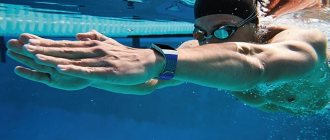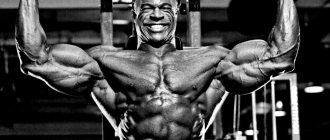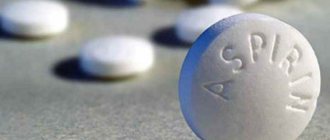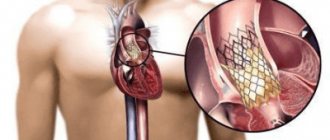Sergey Berdnikov
cardiologist, specialist in echocardiography and functional diagnostics of EMC
Is it possible to play sports with a weak heart?
Exercise is becoming increasingly popular, and many people go to the gym without consulting a doctor. This is one of the most serious mistakes: even if you do not have injuries or obvious illnesses, there may be problems in which you should not force the exercise. However, the opposite situation also occurs: a person knows about the presence of certain health difficulties and avoids any stress. We tell you whether people who have problems with the cardiovascular system can play sports.
What exercises should you not do after 60 years of age?
Banned: what exercises should not be done after 50 years
How to choose physical activity so as not to harm your health?
In cardiology, there are practically no diseases that impose an absolute ban on playing sports. Active physical activity is contraindicated only in the presence of diseases such as acute heart attack, acute myocarditis and dangerous ventricular arrhythmias. And that's probably all. Even after a heart attack, with a number of arrhythmias, arterial hypertension, it is not only possible, but also necessary to train. Running, swimming or cycling can improve quality of life and minimize the amount of medication a person takes.
Photo: unsplash.com/@munbaik_cycling
Before starting classes, you need to come to an appointment with your cardiologist, or better yet, a sports cardiologist and conduct a series of studies. They will show what is happening to your heart and blood vessels at the moment. The mandatory minimum is a cardiogram and ultrasound of the heart (echocardiography). It is not recommended to start playing sports without them. If a person has arrhythmia, then most likely he will also need ECG monitoring - daily or for a longer period. With this information, the doctor can accurately predict the required physical activity, its volume and parameters.
It is also good to visit an orthopedist or rehabilitation specialist. The doctor will help you choose insoles for those who have flat feet or problems with pronation, that is, the way the foot is positioned. This is necessary to reduce joint stress and improve the quality of walking. A few months after the start of training, a visit to the doctor can be repeated. He will see how the patient copes with the recommended walking distance, and perhaps increase the load.
When can you return to training after a cold?
It will take some time. “You can return to intense training no earlier than 14 days after your body temperature has returned to normal,” the medical officer adds.
Trainers recommend returning to fitness after your doctor allows it. It is worth entering the training mode smoothly. “Give priority to activities that restore body mobility; it will be good to roll all the muscles and ligaments on rollers. Why? Due to decreased activity, the chemical processes in the muscles slow down and we lose our freedom of movement. She needs to be returned,” explains the fitness trainer.
The next step should be low intensity cardio training. “It will allow the work of the cardiovascular system to return to the right direction. But watch your heart rate: the pulse should not exceed 140 beats/min for young people and 110 beats/min for older people. You must move easily."
After this, you can return to training at your usual intensity. “It’s best to contact an instructor who can select a lesson based on your condition and monitor it,” sums up the fitness trainer.
As you can see, even with minor symptoms of ARVI, experts advise skipping training and allowing the body to recover.
What kind of training should you focus on in this case?
It's better to start with normal walking. The Scandinavian one has proven itself very well - it is considered an excellent load. If a person walked, for example, three thousand steps a day, then we can recommend increasing the load and doing 6-7 thousand a day. If he walked eight thousand steps, he should move to 12-15 thousand daily.
When the patient is ready to transition from walking to running, we recommend starting with jogging at a slow pace. Even if you want and manage to run faster, at first you should not increase the speed. This is necessary so that the cardiovascular system adapts to running loads, you feel your pulse and do not receive running injuries, which will delay the opportunity to play sports for a long time.
Photo: unsplash.com/@spaablauw
Running can be replaced by interval training such as tennis, squash, badminton or table tennis. The main thing is to do physical effort every day. Cardio sports and cardio exercises not only make a person feel better, but also help reduce the amount of medications, and sometimes even eliminate them altogether. And above all, this concerns arterial hypertension.
As an example, I would like to give the story of one of my patients: he came to me about 10 years ago at the age of 45. Then he was examined in the cardiology department of a large federal center, where he was diagnosed with arterial hypertension and recommended four medications to lower blood pressure. He left the center with the words: “That’s it, I ran.” And he actually put on his sneakers and ran. Running every day and gradually increasing the load, he ran first 5 km, then 10 km, then began running half marathons, and then a marathon. By actively playing sports, he not only normalized his blood pressure, but also gradually abandoned any drug therapy altogether.
How to learn to run for a long time and why is it not as difficult as it seems?
How to exercise properly in old age?
GBUZ LO "Tosnenskaya Clinical Interdistrict Hospital"
Cardiovascular diseases are perhaps the most terrible enemy of humanity. Their spread is facilitated by a sedentary lifestyle, bad habits, hereditary factors, poor environment and stress.
Aerobic sports are the most beneficial for the human cardiovascular system.
Aerobic exercise is an exercise during which the muscles begin to consume the maximum amount of oxygen, and the lungs, heart and blood vessels strive to deliver it to the muscle tissue. As a result of aerobic training, blood pressure stabilizes, heart power and lung capacity increase, which helps prevent the development of diseases of the cardiovascular system. The main components of aerobic exercise are cyclicality and moderate intensity. But the concepts “moderate” and “low” should not be confused, because moderate means the intensity of the exercise, at which the heart rate is about 150 beats per minute. You won’t achieve this figure by walking even a few kilometers at a fairly fast pace, if your cardiovascular system is at least a little trained (say, if you don’t take the elevator to the second floor, or if you don’t go to the store 300 meters away, by car). A heart rate of 150 beats per minute can be achieved during sports such as skiing, running, swimming and cycling. It is not for nothing that we chose these particular sports - they are not only accessible to almost every resident of our latitudes, but also have the greatest positive effect on the human cardiovascular system. Swimming is a great workout for your heart. Of course, this does not mean swimming and playing in the water, but real active swimming over fairly long distances. There is an opinion that styles such as crawl and butterfly are more beneficial for the body than breaststroke and backstroke. However, in reality this is not the case - it all depends on the intensity of the exercise. It is very difficult to simply swim “relaxed” in crawl or butterfly, while you can swim in the same breaststroke without straining too much. But again, any style of swimming is an equally effective workout for your health if you do it at high intensity for a long enough period of time. Moreover, swimming is not only an excellent way to prevent cardiovascular diseases, but also has a very beneficial effect on the human musculoskeletal system. If you don’t know how to swim, be sure to learn, and if you have children, teach them to swim from childhood. Don't forget that swimming has another hidden cardiovascular benefit - it's a great stress reliever. How nice it is in the summer after a hard day at work to swim and remove all the negative energy that has accumulated during the day in the office and transport! Cycling is also a very beneficial sport for the cardiovascular system. The hearts of the world's best cyclists are so trained that they work extremely economically. A well-known fact is that the heart rate of the five-time winner of the most prestigious cycling race in the world, the Tour de France, Miguel Indurain, at rest is 30 beats per minute! Of course, you won't cycle 200 km every day, but daily cycling over 10 km, provided, again, at a high enough intensity, will be your best ally in the fight for heart health. Running is the simplest and most accessible of all aerobic (and not only) sports. In order to run, you will not need to buy any special equipment or learn technique - running is available to everyone. You can run at any time of the year and in almost any weather. And the benefits of this sport for the cardiovascular system can hardly be overestimated. It is well known that people who run have a significantly lower risk of cardiovascular disease than those who lead a passive lifestyle. Running not only trains the heart, stabilizes blood pressure, but also relieves stress. Skiing. This sport requires certain skills, equipment and, of course, weather conditions - it can only be practiced all year round in Antarctica. Learning to ski is very simple; anyone can do it easily. And in terms of the effectiveness of its effect on the cardiovascular system, there is little that can compare with skiing. This sport uses both the upper and lower body muscles well, and cycling is extremely easy to achieve. But, as in any sport, the benefits of skiing directly depend on the intensity of the exercise - therefore, in order for the training to be as effective as possible, you will need not just to go skiing, but to seriously work on the distance. Be healthy! Share news
What health indicators need to be closely monitored?
At the time when a person has made a decision and is ready to engage in Nordic walking or running, before starting training, I recommend conducting a cardio-respiratory test with gas analysis. This is very important for three reasons.
Firstly, this test is extremely sensitive in diagnostic terms and allows you to identify various pathologies, including hidden ones.
Secondly, if a person is overweight, then conducting this test will give a clear understanding of what heart rate zone he needs to exercise in in order to lose weight as effectively as possible.
And the third reason is that the cardiorespiratory test reveals the threshold of anaerobic metabolism. That is, the limit when the load becomes excessive for a person with a certain cardiac pathology. Knowing this threshold, we individually approach the pulse limits and say what the target pulse range is for the patient. His personal “green zone” is, for example, 140-150 beats per minute. But for a person who has suffered a myocardial infarction and is overweight, the target zone is in the region of 110-120 units.
Photo: unsplash.com/@alvarordesign
This test makes it possible to individually select loads and make running safe.
Be attentive to your blood pressure and pulse. If after 2-4 months of training, blood pressure begins to decrease excessively, this is a reason to reconsider the amount of therapy. If your pulse has decreased beyond measure and has become 47-48 (less than 50) beats per minute or, conversely, you begin to see an irregular pulse more often, a rhythm disturbance, you should definitely consult a cardiologist. The doctor will look at the medications you are taking and make recommendations on the intensity and type of exercise you practice.
Why do heart rhythm disturbances occur?
Heart rhythm disturbances can occur for various reasons, the main ones being the wrong approach to training, lack of warm-up and cool-down, and too difficult exercises. Also, the change in heart rate depends on:
- physical condition. A beginner athlete's heart rate (HR) is higher than an experienced one;
- weight. The greater the body weight, the more intense the heart works;
- bad habits. Alcohol and smoking (even passive smoking) can speed up your heart rate;
- emotional state. Elevated or depressed mood increases heart rate;
- fatigue. A short period of time after previous training can cause arrhythmia;
- air temperature in the gym;
- intensity of movements during training.
Pulse is an important marker for determining the effectiveness of training. At rest, the normal heart rate is 60 to 90 beats per minute. During physical activity, the heart rate increases - this is the body's response to the organs' needs to increase the level of oxygen in the blood. By monitoring your heart rate, you can understand when the load is insufficient and when you should reduce the intensity of your training to restore your heart rhythm.
What is strictly forbidden to do?
People with cardiovascular problems, and in general all novice athletes, should not force the load. If a person previously sat in an office and moved little, from car to home or from car to work, then going out for a running workout will pose a huge risk for him. He is unlikely to be able to run for long because he will quickly develop a running injury such as plantar fasciitis (inflammation of the ligaments) or inflammation of the Achilles tendon (located near the heel).
Mysteries of Nordic walking: what kind of sport is it and why is it needed?
“Sports” diseases: what diseases are common among professional athletes?
Regular physical activity really helps treat cardiovascular diseases and keep you in good shape. No medicine can dilate your blood vessels for a long time as much as muscle work. And if sport is present in your life, then, most likely, this or that ailment, for example, arterial hypertension, can significantly soften or even go away.
What happens in the body during ARVI
Fever, runny nose, cough are signs that pathogenic microbes have entered the body. “Elevated body temperature means that microorganisms that cause respiratory diseases have entered the blood and began to circulate throughout the body, choosing where to settle,” comments Natalya Polenova. — A rise in body temperature leads to increased heart rate and respiratory movements, and loss of fluid from the surface of the body and mucous membranes. Symptoms of intoxication develop, which any additional load only aggravates. We are no longer talking about any muscle growth, an anabolic process (which requires additional energy): the body devotes all its strength to fighting the infection.”
But despite this, some fitness fans still strive to train in this state.










